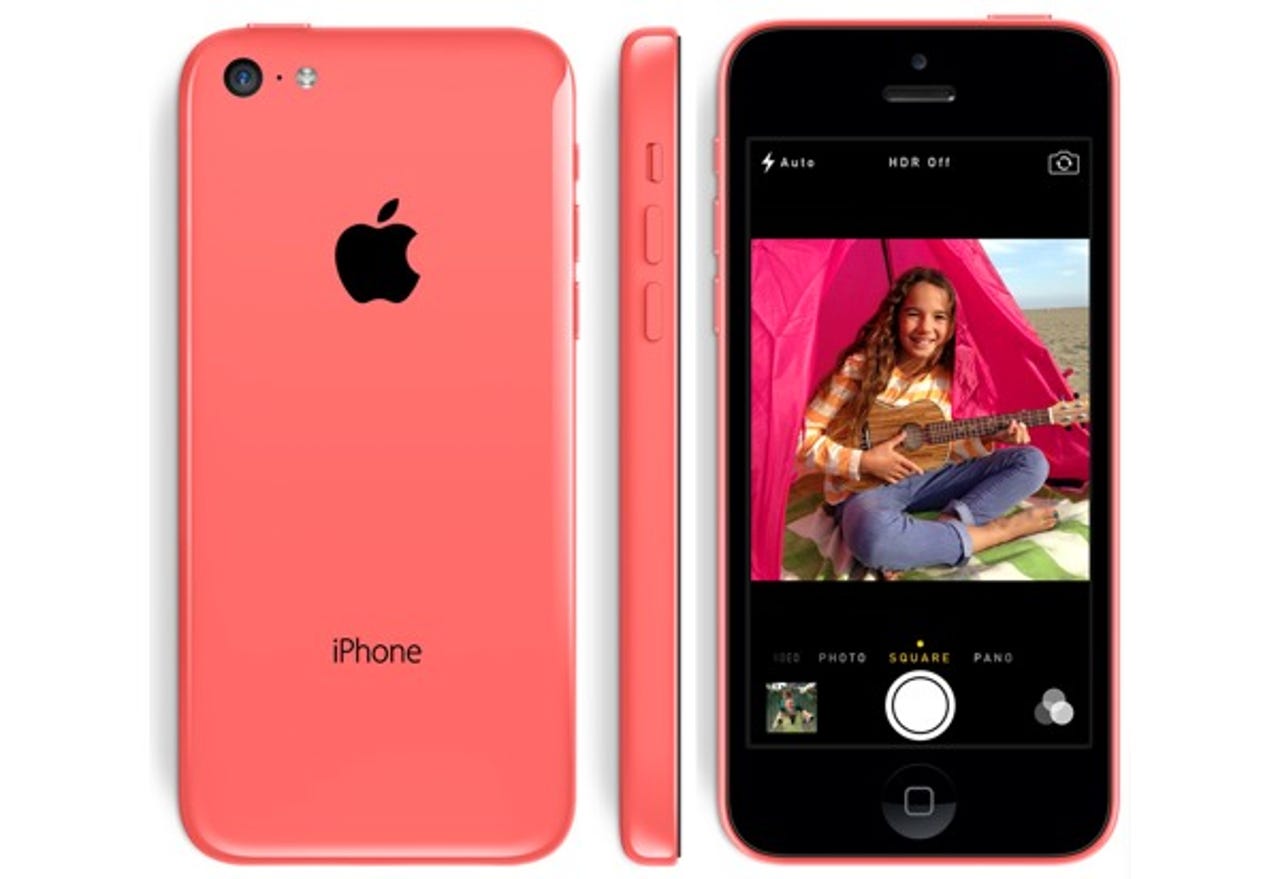Two factors reveal Apple’s real mission with iPhone 5c


Apple iPhone 5c has suffered from a case of mistaken identity.
When leaks about the iPhone 5c started showing up earlier this year, tech industry observers started speculating that this was the long-conjectured "iPhone Mini." Those expectations were based solely on the previous success of the iPod Mini, which was smaller and less expensive than Apple's flagship iPod and went on to become the best-selling model in the product line.
More iPhone and iOS 7
The timing was perfect for such a product, the tech industry surmised, because Apple has been losing market share in emerging markets to sub-$300 Android devices. When Apple officially unveiled the iPhone 5c on Tuesday, it was not that device. It started at $99 on-contract and over $500 without a contract. As such, the tech press and market analysts frowned (some actually sneered).
However, evaluating Apple is a yin and yang thing. You have to look just as closely at what the company doesn't say and doesn't do because they say so little and are extremely calculating with every product decision since they release so few products.
If you want to understand what Apple's doing with the iPhone 5c and why it could make sense, here are the two factors to think about:
1. Apple did not release a new iPod Touch
One of the regular features of Apple's annual September product event is the release of new iPods. It didn't happen this year. While Apple continues selling last year's iPod models (they are still available in the online store and at retail stores), the product is quickly reaching end-of-life.
In July, Apple reported in its earnings call that the number of iPod units sold was down 32% year-over-year, one of the largest dips in the history of the product line. That's significant because the iPod Touch has continued to be a strong seller during the past several years. As recently as 2011, there were quarters when iPod Touch sales rivaled iPad sales.
The iPod Touch was extremely popular among children and teens, who could use it to enjoy the benefits of iPhone apps over WiFi. Apple sold over 80 million iPod Touch devices from 2007 to the end of 2012 (during that same period, it sold 244 million iPhones, by comparison).
While the entry level iPod Touch never cost less than $199--the same price as the entry level iPhone on a 2-year wireless contract--the appeal was that you didn't have to pay $70/month for a smartphone contract with a data plan like you did with an iPhone. However, the economics of smartphones have changed drastically over the past 12 months.
2. U.S. kids are converting to smartphones
During the past year, U.S. wireless carriers have introduced family data plans, which have made it much more practical for parents to get smartphones for their kids. A household with two adults that are already sharing a data plan can now add a child's smartphone to their plan for as little as a monthly fee of $10 (T-Mobile), $20 (Sprint), $35 (AT&T), or $40 (Verizon).
As a result, 37% of U.S. teenagers now own a smartphone (up from 23% in 2011), according to Pew Internet's report, Teens and Technology 2013. Separately, the Zact 2013 Mobile Families Survey, found that 44% of U.S. kids aged 12-17 are using smartphones in 2013. It expects that number to grow to 51% in 2014, 59% in 2015, 66% in 2016, and 73% in 2017.
All of this means that there is likely to be about 40-50 million iPod Touch-owning kids in the U.S. who could soon potentially convert to smartphones. That's partly because of the improved economics of family data plans and partly because many of these iPod Touch owners will be aging into smartphone ownership.
That adds up to a huge market opportunity. It's a new segment to tap in a smartphone market that looks increasingly saturated across the U.S. and Europe.
And, since most these iPod Touch kids are already invested in the Apple ecosystem with music and apps purchases, Apple has a natural advantage to win them over to the iPhone.
From that perspective, the carnival of colors available for the iPhone 5c and its colorful silicone cases make perfect sense. They've got "youthful self-expression" written all over them. They are also destined to stand out in displays at wireless stores across the world.
Bottom line
Let's not think of the iPhone 5c as the low-cost iPhone for emerging markets. Apple may or may not make that product, but this is not it.
Instead, let's think of the iPhone 5c as Apple's iPod Touch replacement for a wave of kids that are about to convert to smartphones.